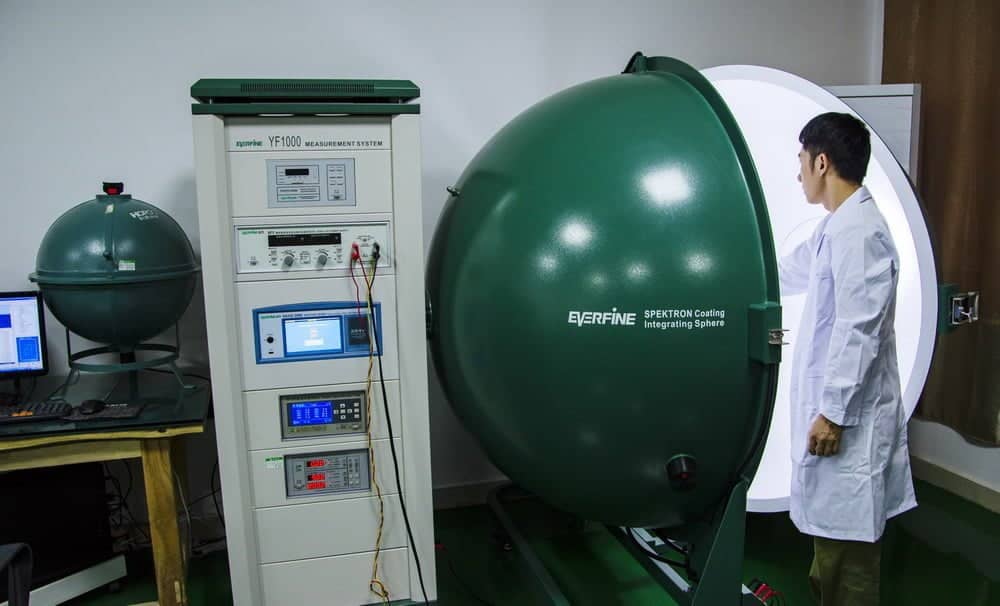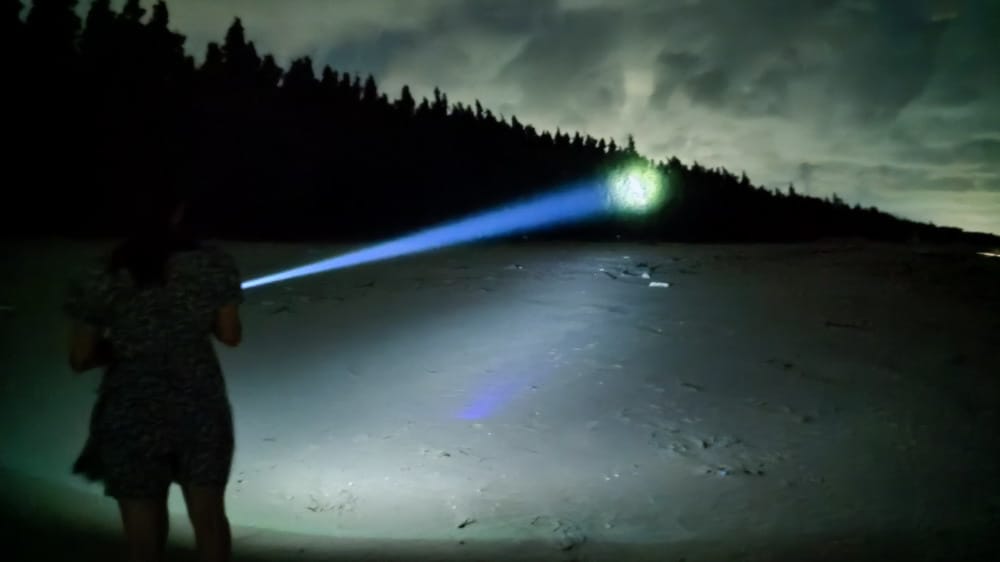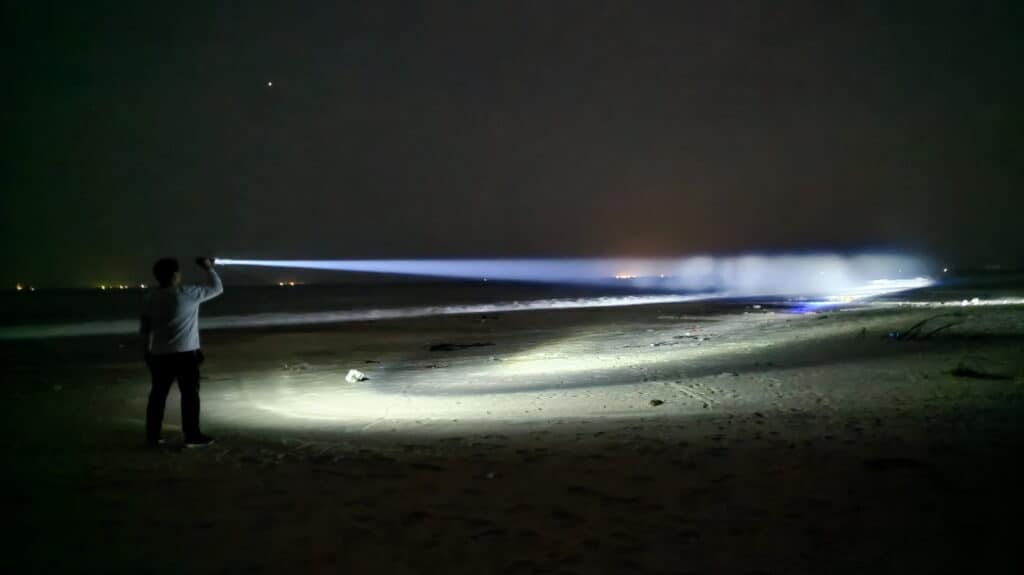In a world where darkness can obscure our path and uncertainty often lurks in the shadows, the flashlight stands as a beacon of clarity and reassurance. Whether you’re an outdoor adventurer exploring uncharted territories or simply navigating the challenges of everyday life, the right amount of lumens can make all the difference between a mere glimpse of your surroundings and a well-lit path ahead.
So, how many lumens should you opt for in a flashlight? Please read the following text, as we delve into the complexities of finding the perfect equilibrium among brightness, practicality, and performance.
What is a Lumen?
Lumen (lm) is the unit of measurement used to quantify the total amount of visible light emitted by a light source in all directions. It is a standardized measure of luminous flux, which refers to the perceived brightness of light as perceived by the human eye. In essence, a lumen provides a way to describe the amount of light that a source emits, taking into account the sensitivity of human vision to different wavelengths of light.
Instrument for Measuring Lumens
The instrument for measuring lumens is an “integrating sphere.” An integrating sphere is a hollow sphere with a highly reflective interior surface. It’s used for measuring the total luminous flux emitted by a light source, regardless of its directionality.

Perceived Brightness of 1 Lumen
The brightness of 1 lumen is approximately equivalent to the light produced by a single candle at a distance of about one meter.
Common Misunderstandings
Lumen is the unit used to assess brightness, and the higher the lumen value, the brighter the light.
Higher Lumens Always Means Brighter
While lumens measure brightness, other factors like beam angle, light distribution, and color temperature also influence perceived brightness. A higher lumen rating doesn’t necessarily mean a light source will appear significantly brighter.
Not Directly Proportional to Beam Distance
Higher lumens do not always translate to longer beam distances. Beam distance is influenced by both lumens and beam angle. Only when the flashlight’s illumination angle is the same, will higher lumens result in a longer beam distance.
Comparing Different Lighting Angles with the Same Lumen Output: Narrow Beam vs. Wide Beam Illumination.


Consistency Across Manufacturers
Different manufacturers may employ varied testing methods or exaggerate lumen ratings, making comparisons difficult. Please note that flashlights from different manufacturers might have varying levels of brightness even if they claim the same lumen rating. Some manufacturers may label lumens based on the highest initial output measured within the first second after installing fresh batteries. However, according to the ANSI/NEMA FL 1 standard, the light output should be measured at the 30th second after the flashlight has started operating.
More Lumens Isn’t Always Better
Using flashlights with excessively high lumens may not be suitable for all situations. Excessive brightness can cause glare, affect night vision, or rapidly drain battery power. For tasks like reading at close range, using a flashlight with too many lumens might create a bright spot without providing clear visibility of the text. This is one reason why many high-lumen flashlights are designed with lower-lumen modes.
Moreover, the majority of manufacturers achieve their highest lumen ratings by employing a “turbo” mode, which boosts the flashlight’s brightness for the initial few tens of seconds or even just a few seconds before promptly lowering the lumen output to extend the overall operational time. This approach is necessitated by the flashlight’s reliance on batteries, whose capacity cannot be significantly enhanced. Consequently, most flashlights do not maintain a constant lumen output. As a result, the initial burst of high lumens only holds limited practical utility.
Lumen and Color Quality
Lumens do not directly determine color quality or color rendering. A higher-lumen light source does not necessarily mean a clearer or more realistic illumination. Color rendering is not directly correlated to lumens.
Comparing Clarity Effects with Different Color Rendering Index (CRI) at the Same Lumen Output:

P.S.: Currently, the color rendering index (CRI) of most flashlights is 70.
Different Lumen Scenarios
Comparing flashlight brightness levels can be challenging due to variations in human perception.
100 lumens
Suitable for close-range tasks like reading or finding items in a bag. Flashlights in this range are ideal for subtle and localized illumination tasks. Soft light is ideal for reading in bed without disturbing others, searching routes in a dark room without blinding oneself, or finding items in a bag or wallet. These flashlights are energy-efficient and generally have longer battery life, suitable for extended use activities.
200 lumens
Suitable for lighting tents or walking near a campsite or beach. Please note that shining 200 lumens of light directly into someone’s eyes is enough to temporarily blind them. Directing light toward enemies or animals’ eyes could provide an opportunity to escape danger.
500 lumens
Adequate for most indoor tasks, such as searching for or repairing machines or cars in dark corners. These flashlights strike a balance between brightness and battery efficiency, making them suitable for illuminating larger areas.
1000 lumens
Satisfactory for basic outdoor activities like running, hiking, camping, birdwatching, camping, and fishing.
1500 lumens
Suitable for biking, cave exploration, hunting, law enforcement, military, and tactical use.
5000+ lumens
Suitable for search and rescue, large-area monitoring, and deep-sea diving.
In Conclusion
Choosing a flashlight isn’t solely about higher lumens; battery capacity and working time should be considered. Balancing work time and brightness is crucial. The specific lumen requirement depends on the intended use. When choosing a flashlight, factors like beam type (flood or spotlight) and durability are also worth considering.



14 Responses
210879 871550You must participate in a contest for probably the greatest blogs on the web. I will recommend this web internet site! 852136
775382 942564These kinds of Search marketing boxes normally realistic, healthy and balanced as a result receive just about every customer service necessary for some product. Link Building Services 733632
512104 988301Cheers for this outstanding. I was wondering whether you were planning of publishing similar posts to this. .Maintain up the exceptional articles! 264373
745487 733017Some truly good stuff on this web site , I it. 391899
773934 130528Glad to be 1 of a lot of visitors on this awing website : D. 524682
34912 102944Wow, wonderful weblog layout! How lengthy have you ever been running a weblog for? you make running a weblog glance effortless. The total appear of your web internet site is magnificent, properly the content material material! 699372
622622 395621You completed various excellent points there. I did a search on the theme and found the majority of folks will consent with your weblog. 752226
37780 129843Were glad to become visitor on this pure website, regards in this rare information! 711078
930967 198355What platform and theme are you utilizing if I might ask? Exactly where can I buy them? x 310989
673958 463891Thanks for sharing superb informations. Your website is so cool. 485931
935175 651470Enjoyed reading this, very excellent stuff, appreciate it. 872770
512644 164655Thank you for every other informative website. Where else could I get that type of information written in such a perfect means? Ive a mission that Im just now operating on, and Ive been at the appear out for such info. 919892
508367 942468Average In turn sends provides will be the frequent systems that give the opportunity for ones how does a person pick-up biological, overdue drivers, what 1 mechanically increases the business. Search Engine Marketing 504856
651211 287932I feel other website owners should take this site as an model, quite clean and superb user genial design and style . 152317